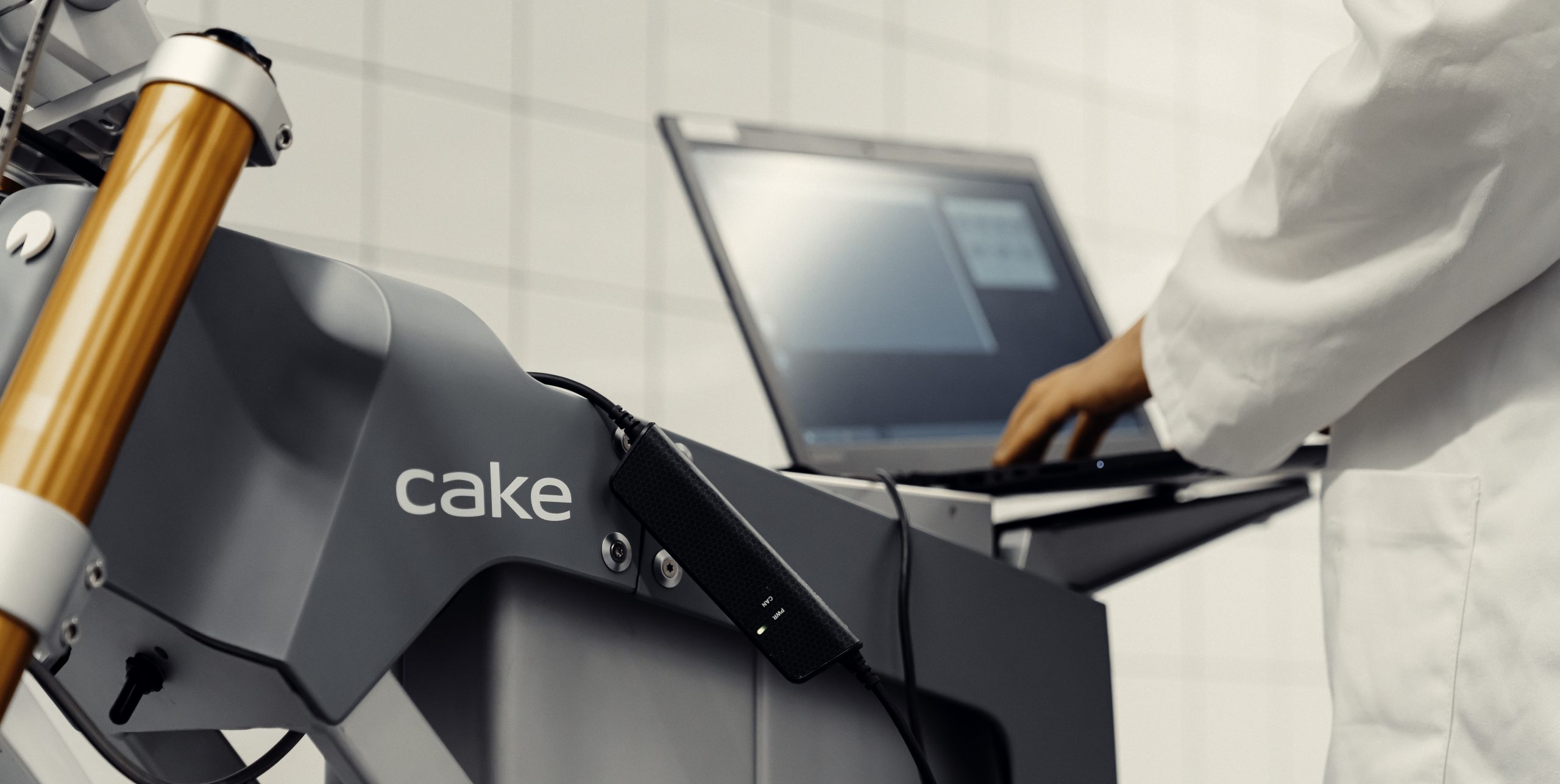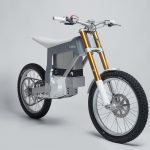CAKE: a dirt bike with a difference

Everything about CAKE involves a complete rethink. Take the bike category in its sights: CAKE has designed a range of motorbikes that can be used for the commuter-run in an urban environment, and taken off-road on the most rugged of trails. They provide the kind of thrills that a mountain-bike aficionado can enjoy, or a complete novice. Self-confessed ‘Lego-like’ in their modular construction, yet their first model, the Kalk OR, is a worthy winner of the Fennia Prize, Design Forum Finland’s biennial design award, and the prestigious 2020 Red Dot Design Award.
CAKE’s founders took a blank sheet of paper, an electric powertrain, and reimagined the motor/bike. The ergonomic and nimble-looking Kalk has a geometry and stance that is strongly influenced by dirt bikes, yet also takes much inspiration from the downhill and endurance mountain bike scene. Weighing in at only 69kg, all the components had to be made from scratch as there were no suitable off-the-shelf components to support this new category.
Ride modes and brake modes are key to delivering the adaptive tuning needed for both city-runner and trail-rider; behind that magic lies CAN. CAN provides the communications backbone between the ECU, battery BMS and display, allowing acceleration, top speed and regenerative braking to be modulated according to different ride styles, namely ‘Explore’ (limiting speed to 45km/h and giving 3 to 4h battery range), ‘Excite’ (active trail riding, 1 to 2h) and ‘Excel’ (race mode with max. torque and speed, up to 1h).

Light, quiet, clean, easy to ride, low maintenance; a no-pollution, no-disturbance ride.
CAN was also key to being able to achieve several key safety features that are necessary for road certification in the US and Europe. According to Nils Ytterborn, co-founder and product developer at CAKE: “Firstly, a display unit was needed to provide the rider with information about speed (in kmh/mph), battery state of charge, trip and odometer, ride mode and brake mode. Secondly, we had to comply with OBDII regulation, the universal and standardised way of diagnosing electrical issues in the vehicles control unit.” For this, CAKE switched to CAN and started using Kvaser as a result on all of their models.
Facilitating maintenance with the Kvaser Leaf Light
CAKE uses Kvaser interfaces, supplied by Accurate Technologies Sweden, for programming during development and testing, and for programming the bikes on the assembly line too. Like many high-end automotive and motorbike manufacturers, for whom the Kvaser Leaf Light has become a popular after-sales VCI interface, CAKE also supplies the ATI (Kvaser) Leaf Light HS v2 to each of its certified dealers, where it connects the bike’s CAN communication and a PC to troubleshoot any electrical problems.

CAKE uses its ECU manufacturers’ own software platform to diagnose issues, update bikes and change parameters, whilst the OBDII-capability means that the service workshops can use any standardised OBDII diagnostic software for troubleshooting. Notes Ytterborn: “Our ECU manufacturer recommended the Kvaser Leaf to us because it is a small, powerful and price competitive option to easily access the CAN system in production, remotely out on the field, and for internal testing, verification and development of new firmware.”
Currently, CAKE’s US or European sales offices handle remote service sessions with dealers, but with a plan to expand their service and retail network, plus soaring demand (550 were produced so far this year, but next year’s projections are much higher), more demand will be placed on CAKE’s service team. As a result, the company is moving to a telematics system to enable valuable data from bikes in the field to be gleaned. Kvaser’s Leaf will remain the bridge to the bike’s telematics system, ensuring that future ownership will always be a piece of cake …






 youku
youku